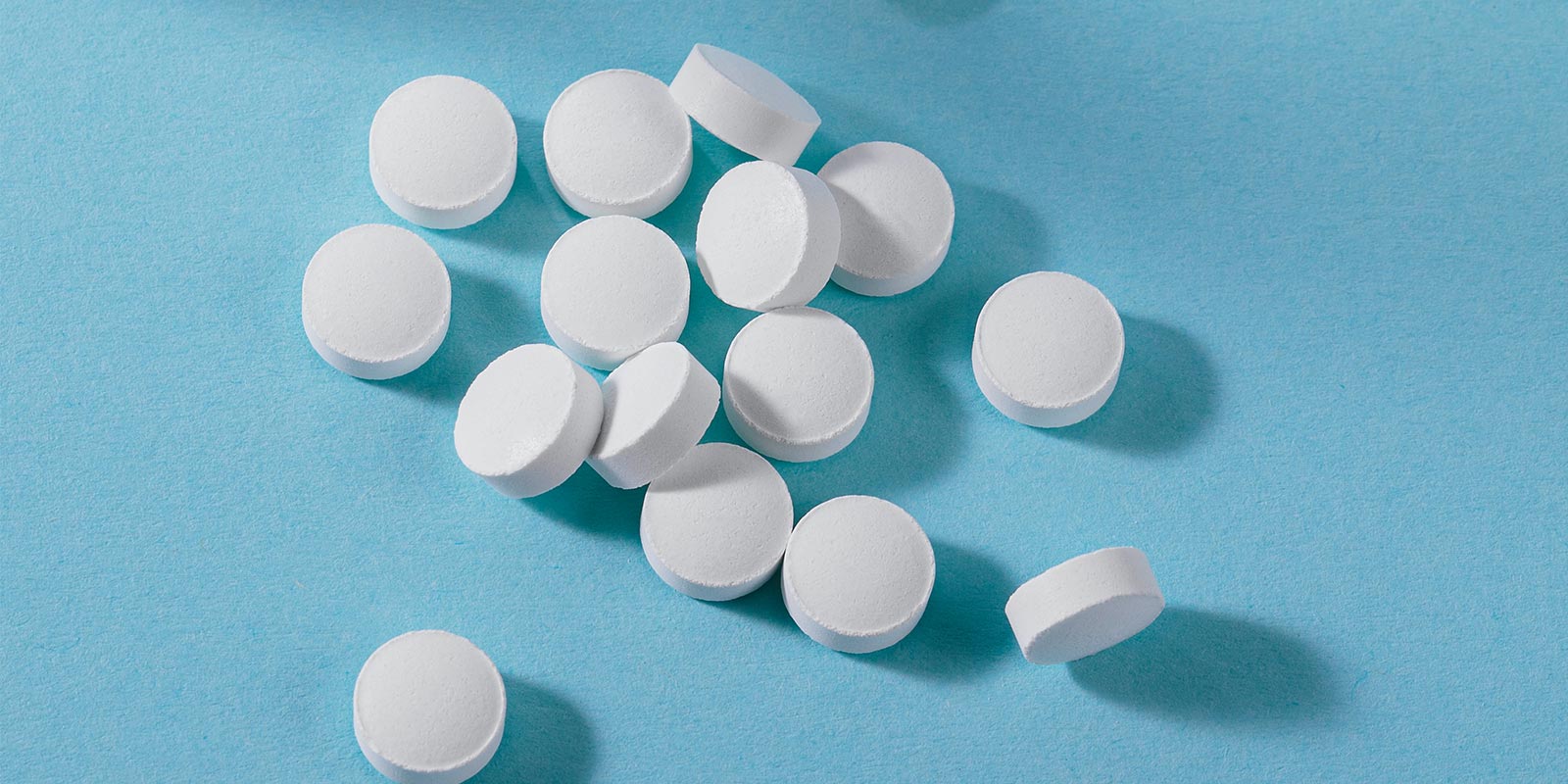How Long Does Ritalin Last?

- Ritalin, or methylphenidate, can last for up to eight hours or more, depending on the formulation.
- Age, metabolism, concurrent medication use, and other factors can affect how long Ritalin exerts its effects.
- Recognizing potential risks and signs of an overdose is key to using Ritalin safely.
Ritalin, an FDA-approved medication for attention deficit/hyperactivity disorder (ADHD), produces effects that last as few as three hours for chewable tablets or as many as 12 hours for sustained-release tablets.[1] Where you land in this range depends on the formulation you use, your age, and several other factors.
Whether you’re preparing to start an ADHD treatment plan or if you’re simply looking to learn more about how this drug works, this guide provides an overview. Read on to learn more about how quickly Ritalin goes to work in the body, what it does, and how to use it safely.
What Is Ritalin and How Is It Used?
Ritalin is a brand name for methylphenidate, a compound that has been used to treat both attention deficit/hyperactivity disorder (ADHD) and, in some cases, adult narcolepsy.[2] The FDA approval of Ritalin specifies that it should only be given to children of at least six years of age.
There are also several fairly common off-label uses for methylphenidate. This refers to the usage of a drug or substance that falls outside of the FDA-approved applications.
Off-label uses of methylphenidate include:[3]
- Refractory depression: A form of treatment-resistant depression that fails to respond to at least two different antidepressant medications.
- Apathy in Alzheimer’s disease: One of the most common symptoms among patients with Alzheimer’s disease, apathy increases medical costs and the burden on caregivers. Methylphenidate has been shown to decrease apathy in Alzheimer’s disease patients safely.
- Increased focus: Sometimes lumped in with other “study drugs” like Adderall, Ritalin is used (or misused) to improve focus, as when studying for an exam.
Ritalin, a mild nervous system stimulant, acts as a reuptake inhibitor of chemical messengers that make you feel alert and engaged.[4] When one nerve sends norepinephrine or dopamine to another nerve, any amount left over is typically reabsorbed. Ritalin interferes with this step, increasing the amount of freely circulating dopamine and norepinephrine in the space between nerves (synapse). Methylphenidate also enhances serotonin activity.
The result is a feeling of increased focus and alertness, similar to, but often more powerful than, the effects of a caffeinated beverage or energy drink.
Side Effects of Ritalin
In the neuropsychiatry literature, it appears that long-term use of methylphenidate, medically supervised and as prescribed, generally causes no serious consequences. Negative effects are usually manageable among children with ADHD.[5]
However, both minor and potentially severe side effects can be problematic.. A history of psychiatric illness, use of certain supplementary drugs or medications, and pregnancy are among several factors that can increase your risk of significant side effects.
FDA labeling information for Ritalin lists roughly two dozen potential adverse reactions, although most of them are rare.[6] The most common side effects include nervousness and insomnia.
Less common side effects include skin hypersensitivity, anorexia, nausea, dizziness, headache, abnormal heart rhythm, blood pressure fluctuations, liver dysfunction, weight loss, abdominal pain, and more.
Ritalin is well-tolerated in most cases of medically supervised use. Speak with your healthcare provider to learn more about side effects and/or your eligibility for this medication.
How Long Do the Effects of Ritalin Last?
Several Ritalin formulations are currently available, each differentiated by the duration of its effects. They’re called Ritalin-SR (sustained release), Ritalin LA (long-acting), and standard or immediate-release (IR) Ritalin.
- How long does Ritalin immediate release last? Typically, Ritalin immediate-release lasts for up to four hours.
- How long does Ritalin sustained release last? Ritalin-SR tablets deliver the drug steadily over roughly eight hours, with a duration of effectiveness of about eight hours.[7]
- How long does Ritalin extended release last? Ritalin LA offers two separate doses of the drug within one tablet. The doses are delivered roughly four hours apart, with a duration of effects of eight to 12 hours.
Non-Drug-Related Factors Affecting Duration
Situational factors like taking Ritalin with or soon after a meal can affect how quickly the body absorbs it. Other, more fixed variables in this equation include the person’s age, metabolism, liver function, dosage strength, and more.
Children have a faster metabolism than adults. This is key to consider when establishing a Ritalin regimen for children with ADHD. Practical concerns relating to performance or behaviors at school might incentivize a parent to ask about extended-release formulations.
How Does Ritalin Compare to Other Stimulants?
Ritalin is just one among several stimulant medications prescribed to treat ADHD. Popular alternatives, including Adderall, Concerta, and Vyvanse, treat many of the same symptoms.. Most of them differ from Ritalin in formulation and duration of effects.
Ritalin vs Adderall
Adderall is formulated with amphetamine salts as active ingredients. Like Ritalin, it is available in immediate-release as well as extended-release formulations.
As confirmed by a small clinical trial that compared these two medications, Adderall was more effective at lower doses and longer-lasting than Ritalin.[8]
The 25 child participants in the study demonstrated improved behavior and academic productivity with both drugs. However, while Ritalin was wearing off at midday, the children who received Adderall were not showing signs of the medication wearing off.
Ritalin vs. Concerta
Concerta is also formulated with methylphenidate but in an extended-release osmotic system.[9]
This allows for a smoother and longer-lasting release curve that lasts roughly 10 to 12 hours. Some patients report that Concerta provides more consistent effects throughout the day, but this has not been widely confirmed by research.
Ritalin vs Vyvanse
Vyvanse is made with lisdexamfetamine dimesylate. It is a “prodrug,” meaning the body must first convert the drug into its active form before it can exert its effects..
Though prodrugs like Vyvanse often take longer to start producing their effects, one key advantage is a longer duration of action. Vyvanse can sustain its effects for 12 hours or more.[10]
Does Ritalin Have Abuse Potential?
The National Center for Drug Abuse Statistics (NCDAS) reported that in 2023, approximately 3.9 million people aged 12 and older misused prescription stimulants. Also in 2023, 2.6 million Americans aged 12 and older reported using methamphetamine in the past year.
The Rise of “Study Drugs” and Ritalin Abuse Rates
An academic review on prescription stimulant use from the University of Rhode Island reports that, in about 1957, the American Psychiatric Association increased its focus on childhood hyperactivity symptoms.
With this shift came a steady increase in the prescription of stimulant medications like Ritalin. This increase in use has been accompanied by an increase in stimulant abuse.
One particularly fast-growing subset of Ritalin abusers is found on college campuses across the country. Stimulants like Ritalin and Adderall are popularly abused as students use them to prepare for tests.
Even more troubling is the fact that students who have grown up taking the drug are now distributing it among classmates who do not have ADHD. Between the years 2006 and 2011, emergency room visits related to prescription stimulant use rose 156%.[12]
Ritalin is more likely to foster a dependence in people who use it recreationally, but it is not a highly addictive drug in medically supervised use as prescribed. Still, improper use over time will create a dependence.
Ritalin Overdose: Signs, Symptoms, and Recovery
Signs and symptoms of a Ritalin overdose include vomiting, tremors, muscle twitching, euphoria, confusion, palpitations, elevated heart rate, and more.[13]
If you or someone around you suspects they are experiencing a Ritalin overdose, taking the proper steps quickly can make the difference between serious harm and a sound recovery.
First, contact emergency medical services (call 911) and follow their instructions as you prepare for them to arrive. They will ask you what you (or the other person) took and how much. If possible, tell them which formulation of Ritalin was taken (e.g., sustained release).
Once the patient is under the care of medical personnel, they may have their stomach pumped. Activated charcoal may be used for detoxification purposes. Any other complications that arise will be addressed by medical personnel.
Need Help? Professional Detox and Rehab Services Are Available
The first thing you should know if you’re struggling with Ritalin dependence (or any other substance misuse) is that you’re not alone.
Sometimes, those struggling with substance misuse feel that they need to isolate themselves. But when you need help, the most reliable way to overcome your dependence is to find a detox and rehab center that provides individualized care. You can also seek help from your primary care provider.
Don’t wait until it’s too late. Take back control of your well-being with professional detox and rehab services.
Frequently Asked Questions About Ritalin

